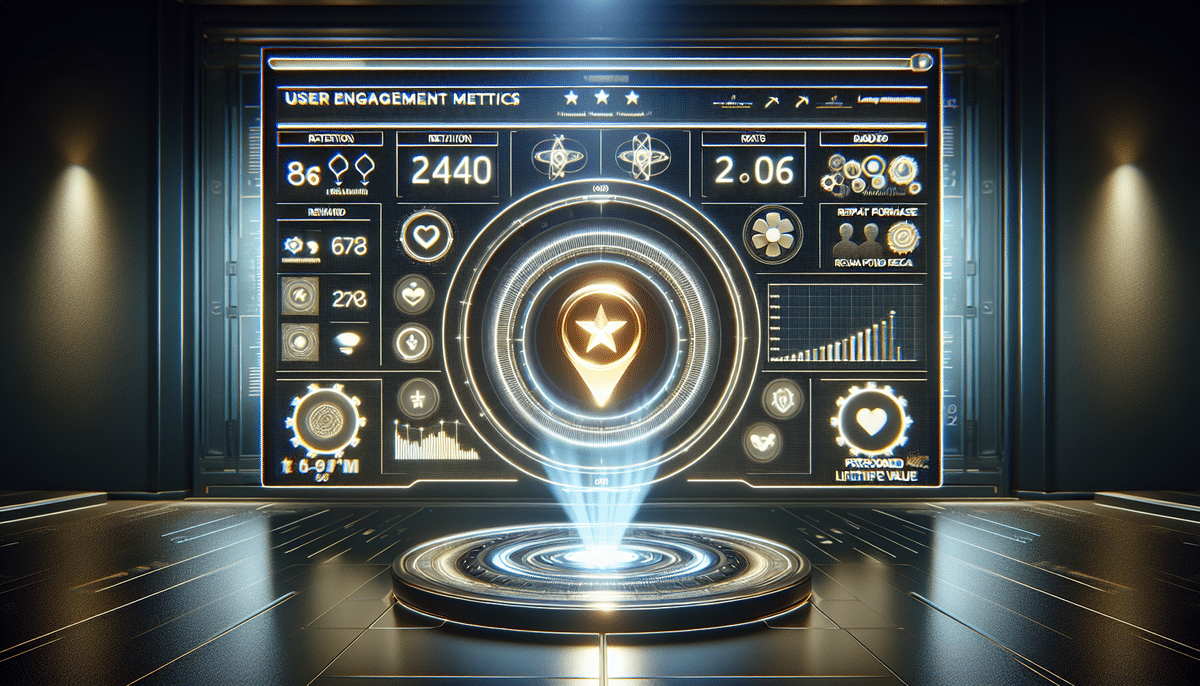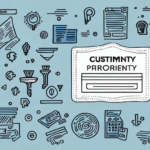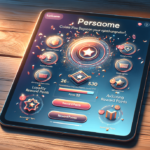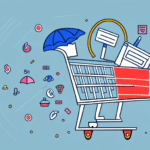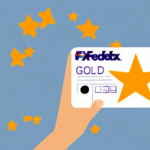How to Build Your Customer Loyalty Programs with Scientific Principles
Customer loyalty programs are instrumental in driving business success. By cultivating a loyal customer base, businesses can boost repeat sales and increase revenue. However, creating an effective loyalty program goes beyond merely offering rewards and discounts. It necessitates a scientific approach that incorporates key principles and metrics. In this article, we delve into the fundamental components of successful loyalty programs and demonstrate how to develop a program that enhances customer loyalty, engagement, and revenue.
Understanding the Importance of Customer Loyalty Programs
Customer loyalty programs reward customers for their continued patronage and incentivize repeat purchases. These programs foster strong relationships with customers, encouraging them to prefer your brand over competitors. Additionally, they offer valuable insights into customer behavior, preferences, and purchasing patterns, enabling you to refine your marketing and product development strategies. According to a recent industry report, businesses with well-structured loyalty programs see a 20% increase in customer retention rates.
Moreover, loyalty programs can significantly enhance customer lifetime value by encouraging larger purchases or the exploration of new products. Offering exclusive rewards and discounts motivates customers to spend more with your brand. Furthermore, customers enrolled in loyalty programs are less likely to switch to competitors, leading to sustained revenue growth and improved profitability.
Key Scientific Principles to Consider When Building Customer Loyalty Programs
Designing a customer loyalty program requires understanding and applying several scientific principles that drive customer loyalty and engagement. These include:
- The Reciprocity Principle: People feel compelled to return favors when they receive something, fostering a sense of obligation.
- The Commitment and Consistency Principle: Individuals are more likely to adhere to their commitments when they declare them publicly.
- The Social Proof Principle: Social influence plays a crucial role in shaping behaviors, as people often look to others when making decisions.
- The Cognitive Dissonance Principle: People strive for consistency between their beliefs, attitudes, and actions, reducing internal conflicts.
- The Anchoring Principle: Initial information heavily influences subsequent decisions, making the first piece of data particularly impactful.
Another vital principle is the Scarcity Principle. This suggests that limited availability increases the perceived value of rewards. By creating exclusive or time-sensitive rewards within your loyalty program, you can enhance their appeal and motivate customers to engage more actively.
Setting Measurable Goals for Your Loyalty Program
Establishing clear, measurable goals is essential before launching a customer loyalty program. These goals should align with your overarching business objectives and adhere to the SMART criteria: specific, measurable, achievable, relevant, and time-bound. Examples of SMART goals include:
- Increasing customer retention rates by 15% within the next year.
- Driving repeat purchases to account for 30% of total sales.
- Boosting customer lifetime value by 25% over the next 18 months.
Understanding your target audience is crucial when setting these goals. By analyzing customer needs and preferences, you can tailor your program to resonate with them effectively. For instance, if your customer base is price-sensitive, discounts and exclusive deals may be more appealing than free gifts.
Additionally, selecting the right metrics to measure your program's success is vital. Common metrics include customer acquisition cost, customer lifetime value, and redemption rates. These metrics provide actionable insights into customer behavior and program effectiveness.
The Benefits of a Data-Driven Approach to Loyalty Program Design
Leveraging data is fundamental in crafting an effective loyalty program. By collecting and analyzing customer data, businesses can gain a deep understanding of customer behavior, preferences, and purchasing patterns. This information allows you to customize your program to meet customer needs effectively. For example, data analysis might reveal that a segment of your customers prefers early access to new products, allowing you to offer tailored rewards that cater to this preference.
A data-driven approach also facilitates continuous improvement. By identifying areas for enhancement and tracking progress toward your goals, you can make informed decisions to optimize your program. Personalization, enabled by data segmentation, ensures that offers and rewards are relevant to each customer group, thereby increasing engagement and loyalty.
Building Customer Personas to Tailor Your Loyalty Program to Your Audience
Creating customer personas involves developing detailed profiles of your ideal customers based on data and insights. These personas help you understand your target audience's needs, desires, and pain points, enabling you to tailor your loyalty program accordingly. Key factors to consider when building personas include:
- Demographics (age, gender, location)
- Behavioral patterns (purchase history, frequency)
- Interests and preferences
- Pain points and challenges
It's crucial to base your personas on real data rather than assumptions or stereotypes. Utilizing customer feedback, surveys, and analytics ensures that your personas accurately reflect your audience, making your loyalty program more effective in driving engagement and loyalty.
Creating an Engaging Rewards System That Keeps Customers Coming Back
The rewards system is the cornerstone of any loyalty program. To maintain customer interest and motivation, it's essential to offer rewards that are meaningful and valuable. Common rewards include:
- Discounts and coupons
- Free products or services
- Exclusive content or experiences
- Early access to new products
- Personalized offers
Effective communication of the rewards and their benefits is crucial to ensure customers feel appreciated and are motivated to participate. One strategy to enhance engagement is implementing a tiered rewards system. This approach allows customers to unlock different levels of rewards based on their loyalty or spending, fostering a sense of achievement and encouraging continued participation.
Regularly updating and refreshing rewards keeps the program dynamic and interesting. Gathering customer feedback on preferred rewards can help tailor offerings to better meet their interests and preferences, ensuring sustained engagement.
The Role of Gamification in Customer Loyalty Programs
Gamification involves integrating game-like elements into non-game contexts, such as loyalty programs, to enhance engagement. Elements like points, badges, and leaderboards can motivate customers to interact more with your program and compete with others. According to a study by ShipScience Research, gamified loyalty programs see a 30% increase in customer engagement compared to traditional programs.
Additionally, gamification provides valuable insights into customer behavior and preferences. By monitoring how customers interact with the program and which rewards they prioritize, businesses can refine their loyalty strategies to better align with customer desires, leading to higher satisfaction and increased sales.
Best Practices for Communicating with Customers About Your Loyalty Program
Effective communication is vital for the success of a loyalty program. Keeping customers informed about program benefits, reward earning and redemption processes, and any updates is essential. Utilize various communication channels such as:
- Email newsletters
- Social media platforms
- In-app notifications
- Personalized messages
Maintaining a friendly, engaging, and informative tone helps build a positive relationship with customers. Additionally, soliciting feedback through surveys or direct inquiries allows you to understand customer opinions and make necessary improvements. By demonstrating that you value customer input, you enhance trust and loyalty.
Measuring the Success of Your Loyalty Program: Key Metrics and How to Track Them
Assessing the effectiveness of your loyalty program is crucial for ongoing success. Key metrics to monitor include:
- Customer Retention Rates: The percentage of customers who continue to engage with your brand over time.
- Repeat Purchase Rates: The frequency at which customers make additional purchases.
- Customer Lifetime Value (CLV): The total revenue a business can expect from a single customer account.
- Engagement Rates: The level of customer interaction with your loyalty program.
Analyzing the cost of acquiring new customers versus retaining existing ones can determine the cost-effectiveness of your loyalty program. A study by ShipScience indicates that retaining existing customers is up to five times more cost-effective than acquiring new ones.
Another critical metric is the redemption rate of rewards, which measures how often customers utilize their earned rewards. A low redemption rate might suggest that the rewards are not attractive or that the program lacks effective communication.
Leveraging Technology to Optimize and Scale Your Loyalty Program
Utilizing technology can significantly enhance the efficiency and scalability of your loyalty program. Key technological tools include:
- Customer Relationship Management (CRM) Software: Helps manage customer interactions and data effectively.
- Mobile Apps: Provide a convenient platform for customers to engage with your loyalty program on-the-go.
- Loyalty Program Management Platforms: Offer comprehensive solutions to design, implement, and track loyalty initiatives.
These technologies automate processes, segment customers based on behavior, and track engagement metrics, allowing for more personalized and effective loyalty strategies. Implementing these tools ensures that your loyalty program can grow and adapt alongside your business.
Case Studies: Successful Examples of Companies Using Scientific Principles to Build Effective Customer Loyalty Programs
Examining successful loyalty programs can offer valuable insights into the application of scientific principles. Notable examples include:
- Sephora's Beauty Insider Program: Utilizes personalization and tiered rewards to engage customers.
- Starbucks Rewards: Incorporates gamification elements like points and badges to enhance engagement.
- Amazon Prime: Offers exclusive benefits and personalized recommendations to increase customer loyalty.
These programs effectively use elements such as personalization, gamification, and social proof to foster strong customer relationships and drive sustained engagement.
Troubleshooting Common Challenges in Building and Maintaining a Successful Customer Loyalty Program
Developing and sustaining a successful loyalty program can present several challenges, including:
- Low customer engagement
- Lack of program awareness
- Over-reliance on discounts and promotions
To address these challenges:
- Regularly assess and optimize your program based on performance data.
- Enhance communication strategies to increase program visibility and understanding.
- Diversify rewards beyond discounts to include experiences, exclusive content, and personalized offers.
Consistently refining your approach ensures that the loyalty program remains attractive and valuable to customers.
Staying Ahead of the Competition: Innovations and Trends in Customer Loyalty Programs
To maintain a competitive edge, it's essential to stay informed about the latest innovations and trends in loyalty programs. Emerging trends include:
- Blockchain Technology: Enhances transparency and security in loyalty transactions.
- Virtual Reality (VR): Creates immersive experiences that can be tied to loyalty rewards.
- Personalized Experiences: Leverages data to tailor rewards and interactions to individual customer preferences.
Incorporating these trends into your loyalty program can enhance its relevance and effectiveness, ensuring it continues to meet evolving customer expectations.
In conclusion, building a successful customer loyalty program requires a scientific approach that integrates key principles and metrics. By setting measurable goals, utilizing data-driven strategies, and tailoring your program to your target audience, you can create a loyalty program that fosters engagement, loyalty, and revenue growth. Keeping abreast of the latest trends and innovations ensures that your program remains competitive and effective in the long term.













